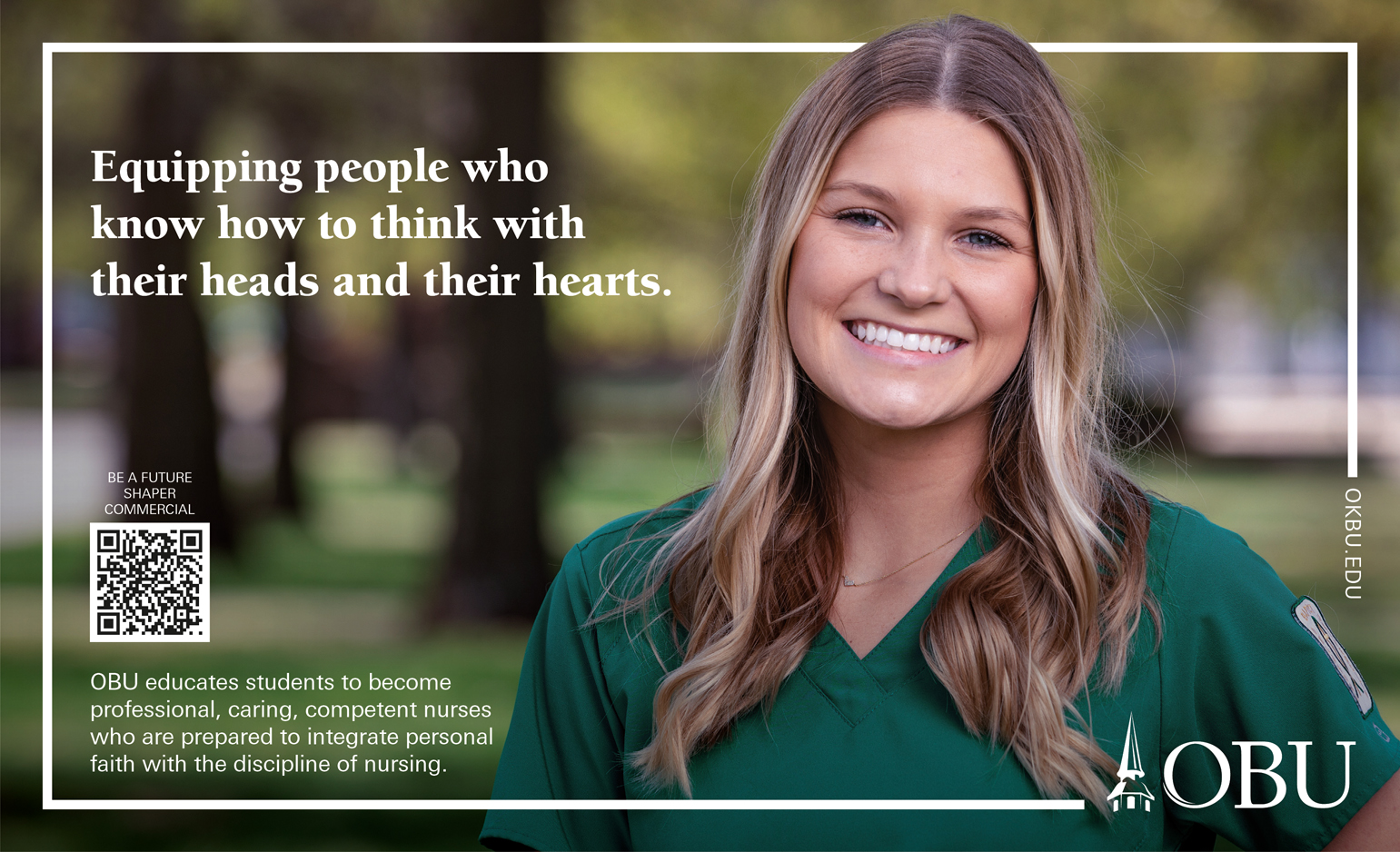The simulation suite of Oklahoma Baptist University’s nursing program is not only why Abbie Richardson came to OBU, but also why she has returned.
Richardson graduated from OBU in 2020 with a bachelor’s degree in nursing and has returned to the School of Nursing as an Instructor of Nursing and the Director of Nursing Simulation.
“I started as a brand-new nurse during COVID, and it was the hardest thing I have ever done in my life,” Richardson said. “People were so sick, and I was devastated by loss every day. I thought back to simulation so often during that time because the patients in the simulation lab prepared me to take care of my real patients that desperately needed safe nursing care.”
More than that, the students’ conversations with faculty in debriefing about caring for grieving families, holistic patient care, and the integration of faith into practice gave Richardson the tools she needed to survive as a nurse in the pandemic.
The simulation experiences enabled her to care for critically ill patients, cope with loss and challenges, and provide hope to others in the darkest of times.
“Without the foundation that our faculty and simulation program gave me, I don’t think I could have fought through the Pandemic alongside my fellow nurses,” Richardson said. “That is why I returned as the simulation director at OBU.”
OBU is not only preparing students for success in the classroom, but also equipping them for a meaningful career in the medical field.
Home to this cutting-edge OBU program is the Jane E. and Nick K. Stavros Hall, a 31,600-square-foot nursing education facility.
OBU’s simulation suite has six functioning hospital rooms. The program’s three standardized adult mannequins, birthing mother, and pediatric mannequins are the top-tier of high-fidelity simulators. They react like a real patient, capable of breathing, talking, sweating, bleeding and reacting to medications. These display vital signs such as blood pressure, pulse and respiration, preparing students for a full range of healthcare situations they will encounter as nurses. These mannequins are limitless in the disease processes they can portray, meaning faculty can place students in almost any nursing situation and expose them to more complex patient scenarios.
The OBU simulation lab is meant to function like a hospital.
During simulation experiences, students get to be the nurse. What is incredible about that is by the time they leave our program, they have spent over 70 hours in simulation thinking like a nurse, making the decisions, and providing patient care. The decisions they make regarding nursing care are their own and that is where the best learning happens. We have audio and visual technology within our simulation rooms that allow observing students to watch the scenario, while actively providing feedback and problem-solving with their peers.
After a scenario is complete, the students and faculty come together for a time of de-briefing.
Richardson said, “As faculty, this is where we see the lightbulbs go off and we get to watch them turn into compassionate, safe, and caring nurses. I owe so much to our simulation program, and I am thrilled to have a front row seat to the student transformations that take place in our program.”
For more information about OBU’s nursing programs, visit https://www.okbu.edu/nursing.













